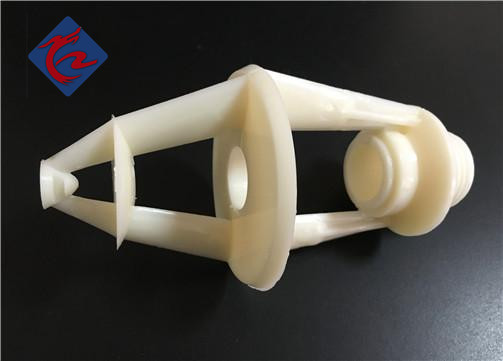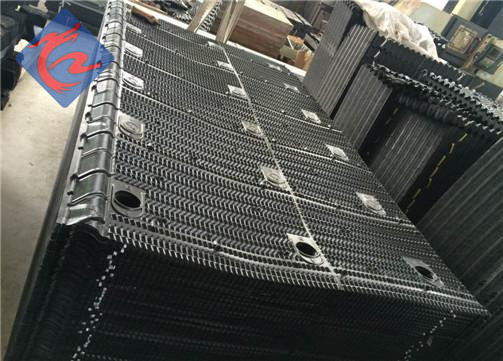Spray-type cooling towers effectiveness is reliant on how well the cooling tower fill material exposes the water to the mass air flow. The spray nozzles are designed to widely distribute the water onto the fill material, and the fill material needs to be able to expose the maximum amount of surface area of the water. The more water exposed to the mass air flow through the cooling tower, the greater the efficiency.

For specific designed systems the cooling tower needs to be designed so that the period of time that the water is in contact with the air is sufficient to achieve the desired, or necessary cooling effect. The greater the demand from the industry the greater duration of intimate contact will be necessary in the fill to achieve proper enthalpy. Enthalpy is a measure of the system’s ability to cope with the overall demand.
One way to increase the contact between water and air in a spray-type cooling tower is to make the tower higher. The greater height allows for increased fall time for the water. The longer the water is falling through the air the cooler it becomes. There are limits to this effect dictated by psychrometric limits. This means that given a tower of infinite height the cooling towers ability to cool water would be limited to the air coming into the tower. The air exiting the tower would also be limited to the hot water entering the cooling tower.

Clearly there are constraints on how tall towers could or should be constructed. Not to mention what the monolith free fall spray type cooling towers would cost. There would also be simple structural concerns, where wind would also come into play and introduce horizontal wind shear factors. This is where fill material comes in and shines. Fill simply slows the water down in its journey through the cooling tower. This increases the amount of time the water is in contact with the air without having to have monolithic cooling towers.
Many times fill is referred to as a heat transfer surface, this is not actually true in the strictest sense. The heat transfer is achieved through the water surface contacting the mass air flow. The fill simply helps increase the duration, and therefore the overall effect of the heat transfer.